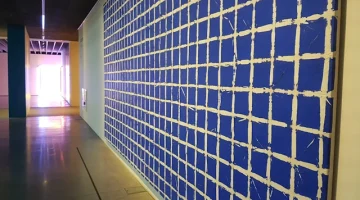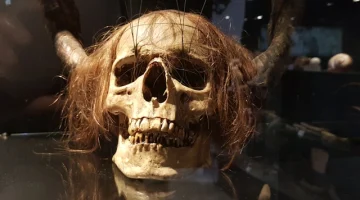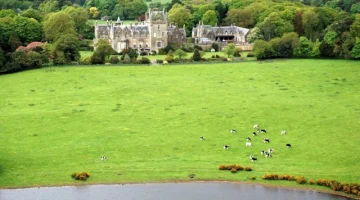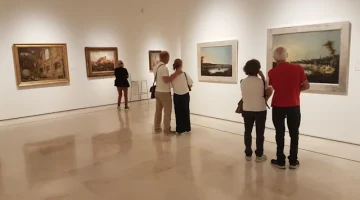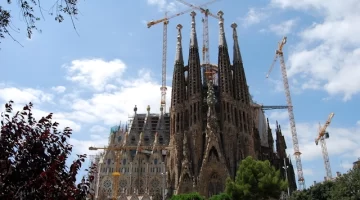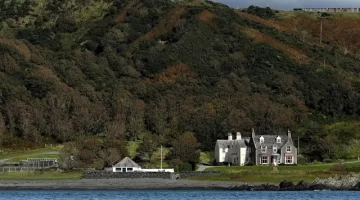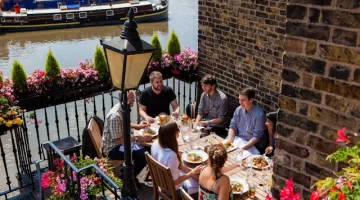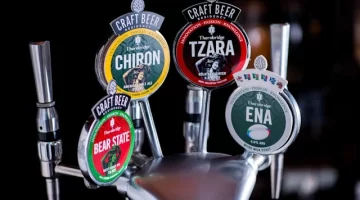Visiting Carthage
The Travel Pages visits Carthage, the archaeological site on the Tunisian coast, a few miles to the east of Tunis and close to Sidi Bou Said.

If you’re visiting Carthage then you should know that it isn’t just an archaeological site but is also a suburb of Tunis, and quite a select one. Not only are there expensive villas and embassies, but the President himself lives here in the Presidential Palace, right next to the ruins of Carthage.

It has to be said that the ruins of Carthage are not among the country’s major sites. This can be a disappointment to some visitors, as almost everyone knows the name of Carthage – even if you don’t always know why – yet the remains here are not nearly as impressive as the much lesser-known Tunisian sites such as Dougga and El Djem.

Visiting Carthage
Having said that, you can’t come to Tunis and not visit Carthage, to see the remains for yourself. There is more still to be discovered about Carthage, but it isn’t likely to happen for a while as other remains are buried under those expensive modern villas and beneath the Presidential Palace.

Hannibal
There are two main reasons why people remember Carthage from history lessons at school. The first is that Hannibal was born here, and everyone recalls the story of him crossing the Alps on his elephants. The second reason is that Carthage was for a long time the most important city in the Mediterranean, and that means the most important in the western world.

Hannibal
Born in Carthage in 247BC, by the age of 26 Hannibal was Commander-in-Chief of the powerful Carthaginian army. No doubt the fact that his father was a military leader helped a little. He was so successful that the Romans waged their Punic Wars against the Phoenicians from Carthage, to try to reduce their power and conquer them.
It was during the Second Punic War that Hannibal conceived the bold idea of taking 40,000 troops, with 38 elephants to use as battering rams, through Spain and France, then across the Alps into Italy, to conquer Rome by land instead of by the expected sea attack.
Hannibal had several heroic victories but gradually his army diminished in power and he returned home to defend Carthage, but the Romans were victorious and a treaty was signed in 201BC. After further defeats and problems, Hannibal committed suicide at the age of 64.

History of Carthage
Carthage was probably founded in 814BC by the Phoenicians, from Tyre in modern Lebanon. Their name for it, meaning ‘new city’ was Qart Hadasht, from which the modern name derives. The Romans attempted to conquer it many times, and only succeeded after first destroying it in 146BC after a three-year siege. It was then re-founded in 44BC and thrived for over 700 years, firstly under the Romans, then the Vandals, and finally the Byzantine Empire.

The Antonine Baths
There are six sites spread throughout the area of modern Carthage, but the main one which the organised tours usually take in is that of the Antonine Baths. This is situated on the coast in a pleasant little park, and though there are some other remains on the site, such as a cistern and the remnants of some houses, it is the baths themselves that are the main attraction.
Before you enter the ruins you can see a model of what the baths would have looked like when they were functioning from the 2nd century AD onwards. They were obviously quite spectacular, and were the third biggest baths in the Roman Empire and the largest in North Africa. You need your imagination to recreate them, and it will help if you have a good guide and/or a good map. You can piece together where the gymnasium was, the changing rooms, the hot, cold and tepid baths, and the central courtyard which was covered by a huge dome supported on twelve pillars, a couple of which still stand with others lying shattered on the ground.

Roman Theatre
Not far from the baths stood the Roman Theatre, which could once hold 10,000 people and is used today for the annual International Festival of Carthage, but the theatre has been almost completely rebuilt and not always in the style of the original.

Further on are the cisterns, which held the water supply brought to Carthage from the spring at Zaghouan 35 miles (56 kms) away, but now they are overgrown and neglected. Not far away is the amphitheatre, where 35,000 people once sat to watch the gladiators and wild animals, but their modern excavation has scarcely begun. Carthage still has many secrets it has yet to reveal.

Photography Advice
Don’t go clicking away with your camera the moment you enter the site, despite the attractive view down a long avenue of trees. The white walls and building at the end are the Presidential Palace, which it is forbidden to photograph for security reasons. Don’t take this lightly, as the staff take security seriously… as we found out!
Photography Advice
Don’t go clicking away with your camera the moment you enter the site, despite the attractive view down a long avenue of trees. The white walls and building at the end are the Presidential Palace, which it is forbidden to photograph for security reasons. Don’t take this lightly, as the staff take security seriously… as we found out!
OUR TUNISIA GUIDE
This Travel Guide to Tunisia is by award-winning travel writer Mike Gerrard. The guide covers Tunis, Carthage, Sidi Bou Said, archaeological sites like Dougga, excursions to the Sahara Desert, and all the main Tunisian beach resorts and tourist towns.
Amazon 5-Star Reviews
‘Interesting information straight to the point and informative, I like the mix of tourist information and cultural knowledge and it is not a lengthy read, just enough to inform you about Tunisia.’
‘Very useful information including things to see and do and even how to avoid local pit falls good overview of all the areas.’
‘Very useful guide for visiting Tunisia and very good value for the money. I found the book to be very informative.’
Read more on Amazon or click on the cover.

